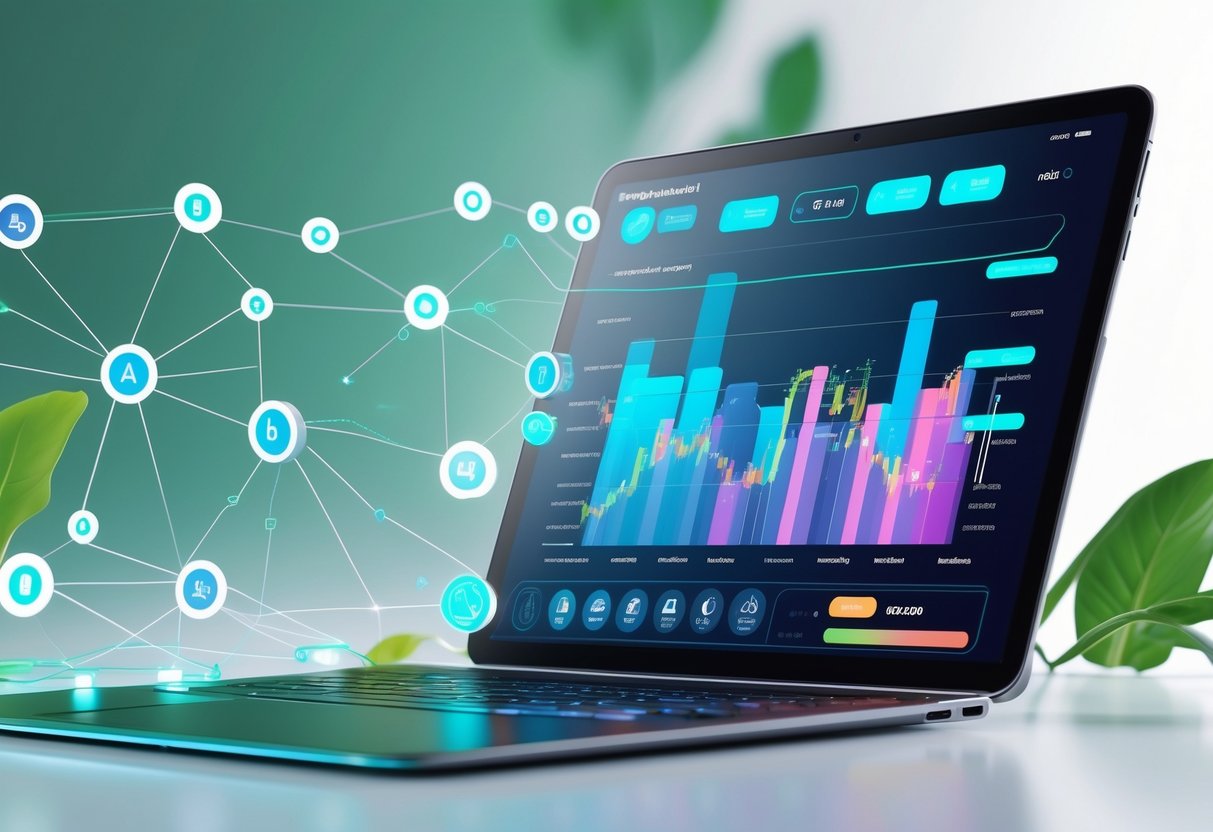
Farming AI crypto tokens has become a popular way to earn passive income in the DeFi space. By 2025, many investors are looking for methods to maximize their yields while keeping gas fees low. These transaction costs can quickly eat into profits, especially during times of network congestion.

See Rewards Linked to This Topic—Follow Steps to Get:
Great news—exclusive perks are just a few steps away! Follow these simple actions to unlock bonuses linked to this topic!
How It Works (Fast & Easy!)
1️⃣ Check Your Rewards in Seconds
→ Click Here to See How Much You Qualify For (No commitment!)
First-time withdraw can unlock 7K+ USD.
2️⃣ Connect Your Wallet
Use any mobile or desktop wallet (MetaMask, Trust Wallet, etc.)—approved in seconds!
3️⃣ Cash in Your Pocket in 15 Minutes!
Get your funds fast—no credit checks, no waiting.
Why This is a Game-Changer 💎
✔ Each month there is a free offer reward for all users.
🔥 Limited-Time Offer – Claim Your $7K+ Now!
👉 Get Instant Access Here
No hidden fees. No credit checks. Just fast cash against your crypto! – and this is not a financial advice.
Using DeFi aggregators is one of the most effective ways to farm AI crypto tokens while minimizing gas fees. These platforms automatically find the best yields across multiple protocols and optimize transactions through batching. This approach not only saves on fees but also helps spread risk across different platforms.
Cross-chain bridges have also revolutionized AI token farming by allowing investors to move assets to blockchains with lower fees. As the search results suggest, specialized tools can track all farming activities, including deposits, withdrawals, and the gas fees paid – which might even be tax-deductible in some jurisdictions. This comprehensive approach helps farmers maximize their returns while staying compliant.
Understanding AI Crypto Token Farming and Gas Fees

AI crypto token farming combines artificial intelligence with DeFi yield strategies to optimize returns. The process involves several technical components, but the most significant factor affecting profitability is often gas fees.
What Is AI Crypto Token Farming?
AI crypto token farming represents the intersection of artificial intelligence and decentralized finance (DeFi). This innovative approach uses AI algorithms to analyze market data, predict trends, and automatically adjust yield farming strategies for maximum returns.
Unlike traditional yield farming, AI-powered platforms can:
- Monitor multiple protocols simultaneously
- Adjust positions based on real-time market conditions
- Rebalance portfolios to maximize APY
- Identify emerging opportunities faster than human traders
The Lazy SummerFi Protocol exemplifies this trend, making DeFi accessible even to beginners. These systems eliminate the need to manually track complex market movements or make constant decisions about where to allocate funds.
AI farming tools typically spread investments across various platforms to reduce risk while optimizing for the highest yields.
The Role Of Gas Fees In Blockchain Networks
Gas fees function as transaction costs on blockchain networks, compensating validators for processing and securing transactions. These fees fluctuate based on network congestion and transaction complexity.
When executing actions in DeFi—swapping tokens, providing liquidity, or claiming rewards—users must pay gas fees. During peak usage periods, these fees can spike dramatically, sometimes exceeding $100 per transaction on networks like Ethereum.
Different blockchains have varying fee structures:
- Ethereum: Typically higher fees but greater security
- Polygon: Lower fees with reasonable security
- Avalanche: Fast transactions with moderate fees
- Solana: Very low fees but occasional network issues
Smart contract interactions for yield farming often require complex operations that consume more computational resources, resulting in higher gas costs than simple transfers.
How Gas Fees Impact Yield Farming
Gas fees directly affect the profitability of AI crypto token farming strategies. High transaction costs can quickly erode potential earnings, especially for smaller investment amounts.
Consider this example: If earning $10 daily in rewards but spending $15 on gas fees to claim them, the strategy becomes unprofitable. This problem is particularly acute during market volatility when rapid repositioning is necessary.
DeFi aggregators help reduce this impact by:
- Batching multiple transactions together
- Timing operations during low-congestion periods
- Optimizing contract interactions for gas efficiency
- Spreading assets across multiple low-fee platforms
For effective AI token farming, calculating the “break-even point” is essential. This represents the minimum time investments must remain locked before returns exceed gas costs.
Many platforms now implement gas optimization features that automatically determine when claiming rewards becomes profitable based on current fee conditions.
Choosing The Right Blockchain Networks For Low Gas Fees

Selecting the optimal blockchain network is crucial for minimizing gas fees when farming AI crypto tokens. Different networks offer varying fee structures, transaction speeds, and security features that directly impact your profitability.
Comparing Popular Networks: Ethereum, Solana, Polygon, and BSC
Ethereum remains the most established blockchain for DeFi projects, but its gas fees can be prohibitively high during network congestion. In 2025, even with improvements from the proof-of-stake transition, ETH gas fees still average $2-5 per transaction during normal conditions.
Solana (SOL) offers dramatically lower fees, typically below $0.01 per transaction, with throughput exceeding 65,000 transactions per second. This makes SOL ideal for frequent, small-value AI token farming operations.
Polygon (MATIC) provides an Ethereum-compatible environment with fees around $0.01-0.05 per transaction. Its EVM compatibility means you can use familiar Ethereum tools and wallets.
Binance Smart Chain (BSC) balances affordability with ecosystem size, with fees averaging $0.20-0.50. BSC hosts numerous AI token farming projects with established liquidity pools.
Layer 2 Solutions And Rollups For Gas Fee Reduction
Layer 2 solutions have revolutionized Ethereum’s scalability issues by processing transactions off the main chain. Arbitrum and Optimism lead the rollup solutions, reducing gas fees by 90-95% compared to Ethereum mainnet.
ZKSync employs zero-knowledge proofs to batch hundreds of transactions, offering fees as low as $0.10 while maintaining Ethereum’s security. The technology allows for near-instant finality compared to optimistic rollups.
When farming AI tokens, consider projects deployed across multiple L2 networks. This strategy lets you:
- Shift between networks as fee dynamics change
- Take advantage of cross-chain bridges like Orbiter Finance
- Access network-specific incentives and rewards
Some L2s offer gas-free transactions for specific actions, making them ideal entry points for new AI token farmers.
Evaluating Transaction Speed, Security, And Cost Efficiency
Transaction speed significantly impacts AI token farming efficiency. Solana completes transactions in under 400 milliseconds, while Ethereum takes 12-15 seconds. Faster networks allow for timely entry into profitable farming opportunities.
Security considerations should balance against cost savings. Ethereum offers the highest security guarantees but at premium prices. BSC provides lower security with its limited validator set but compensates with lower fees.
Cost efficiency extends beyond base transaction fees. Consider:
- Gas token rebates (offered by some protocols)
- Fee optimization tools like gas.zip
- Time-sensitive gas pricing (transactions during off-peak hours)
The ideal network balances these factors based on your farming strategy. High-value, infrequent transactions might justify Ethereum’s fees, while constant rebalancing favors ultra-low-fee networks like Solana.
Assessing Network Congestion And Scalability
Network congestion directly impacts gas fees, especially on proof-of-work and early proof-of-stake networks. Ethereum’s fees can spike 10-20x during NFT drops or major market movements, making AI token farming unprofitable during these periods.
Scalability refers to a network’s ability to handle increased usage without significant fee increases. In 2025, Polygon processes up to 7,000 transactions per second, while Ethereum manages around 30 without Layer 2 assistance.
Tools to monitor network congestion include:
- Gas trackers (Etherscan, BSCscan)
- Congestion prediction algorithms
- Fee alert services
Some AI token farming protocols implement “gas-aware” features that automatically pause or adjust strategies during high congestion. These smart contract innovations help protect yields from being eroded by excessive fees.
Choose networks with proven track records during peak usage and clear scalability roadmaps to ensure sustainable farming operations.
Strategies To Minimize Gas Costs When Farming AI Crypto Tokens

Gas fees can significantly reduce your profits when farming AI crypto tokens. Implementing the right cost-cutting approaches will help maximize your returns while minimizing transaction expenses.
Timing Blockchain Transactions For Lower Fees
Gas fees fluctuate based on network congestion, following predictable patterns throughout the week. Weekends typically offer lower fees as trading activity decreases. The optimal time window often falls between 12 AM and 4 AM UTC when most Western users are inactive.
Many experienced farmers use dynamic pricing strategies, waiting for the base fee to drop below acceptable thresholds before executing transactions. Setting custom gas limits and priority fees helps balance transaction speed with cost.
For example, farming operations that can wait a few hours might set lower priority fees, while time-sensitive moves might justify higher costs. This flexibility allows farmers to save up to 30-40% on transaction costs compared to peak hours.
Utilizing Gas Trackers And Fee Estimators
Gas trackers provide real-time data on network conditions, helping farmers make informed decisions. Popular tools like GasNow and Etherscan’s gas tracker display current gas prices and predict future trends based on pending transactions.
Some advanced options include:
- Blocknative Gas Estimator: Offers percentile-based predictions
- ETH Gas Station: Provides time estimates for different fee levels
- MetaMask’s built-in estimator: Convenient for quick checks
Many trackers also offer mobile alerts that notify users when fees drop below set thresholds. This automation saves time and ensures farmers never miss opportune moments to execute transactions.
Setting up custom alerts for specific price points can reduce farming costs by 15-25% over time compared to manual monitoring.
Choosing Efficient DApps, DEXs, And Aggregators
Gas fee optimization starts with selecting platforms designed for efficiency. DEX aggregators like 1inch, Matcha, and ParaSwap automatically route transactions through the most cost-effective paths.
ParaSwap offers gas refunds and a ParaBoost mechanism that further reduces transaction costs. Similarly, Curve Finance and Balancer have been optimized for gas efficiency, especially for stable asset swaps.
When farming AI tokens, look for:
| Platform Type | Top Options | Gas Saving Features |
|---|---|---|
| Aggregators | 1inch, ParaSwap | Route optimization, gas tokens |
| DEXs | Curve, Balancer | Low-slip trades, efficient contracts |
| Layer 2 Solutions | Arbitrum, Optimism | 10-100x lower fees than Ethereum |
Some platforms also offer batch processing features that combine multiple operations into a single transaction, reducing overall costs by up to 40%.
Maximizing Yield And Managing Risks In Low Gas Fee AI Token Farming
Successful AI token farming requires balancing reward potential against various risks while keeping transaction costs low. Smart strategies can significantly boost your returns when working with platforms like Ozak AI and other DeFi protocols.
Selecting High-Reward, Low-Fee Liquidity Pools
Maximizing yield in AI crypto token farming starts with choosing the right liquidity pools. Look for pools with high APY (annual percentage yield) but low platform fees – ideally under 0.1%. Platforms like Stargate Finance offer competitive 0.06% fees while supporting multiple blockchains.
When evaluating pools, check:
- Trading volume: Higher volume usually means better rewards
- Token stability: Less volatile pairs reduce impermanent loss risk
- Pool size: Larger pools typically offer more consistent returns
Compare APY across different platforms using aggregator tools like Zapper. These tools help you spot the best opportunities without manually checking each protocol.
AI-driven platforms like Ozak AI provide analytics that can identify promising pools before they become crowded, giving early adopters an advantage in securing higher yields.
Auto-Compounding, Staking, And Lending Options
Auto-compounding features automatically reinvest your earned tokens, creating a powerful compounding effect that significantly increases overall returns. Look for protocols that offer this feature with minimal additional fees.
Staking AI tokens on their native platforms often provides:
- Higher APY than basic liquidity provision
- Governance rights within the protocol
- Access to new features or token airdrops
For more conservative strategies, consider lending your AI tokens through established DeFi protocols like Aave or Compound. These platforms allow you to earn steady interest while maintaining more flexibility to withdraw your assets.
Yearn Finance offers “vaults” that automatically move your assets between lending protocols to capture the highest yields, saving you gas fees from frequent transfers while optimizing returns.
Risk Management: Avoiding Scams, Impermanent Loss, And Security Risks
Proper risk management is essential when farming AI crypto tokens with low gas fees. Impermanent loss poses a significant threat – this occurs when token prices change dramatically after you provide liquidity.
To protect yourself:
- Diversify across multiple pools and protocols
- Start with stablecoin pairs (like AI token/USDC) to reduce volatility
- Use AI-driven risk assessment tools that analyze smart contracts
Avoid obvious scams by researching thoroughly before investing. Look for:
- Audited smart contracts
- Active developer communities
- Transparent tokenomics
Keep most of your assets in non-custodial wallets and only move what you need for farming. Enable all security features on your accounts, including 2FA. Remember that the highest APY pools often carry the greatest risks, so balance your portfolio accordingly.
Frequently Asked Questions
Gas fees can be a major challenge when farming AI crypto tokens. Many traders look for strategies to minimize these costs while maximizing their yield farming potential. Layer 2 solutions and timing your transactions can make a significant difference in your overall profits.
What strategies can reduce gas fees while farming AI crypto tokens?
AI crypto token farming can be more cost-effective with several proven strategies. Batch transactions together instead of making multiple small ones. This consolidates the gas fees into fewer transactions.
Use gas tokens when available. These special tokens let you mint when gas prices are low and spend them when prices rise, effectively reducing your costs during peak times.
Consider moving to blockchains with lower native fees like Polygon, Avalanche, or Binance Smart Chain rather than staying on Ethereum mainnet where fees can be prohibitively expensive.
Which Layer 2 solutions offer the lowest gas fees for AI token farming?
Polygon consistently offers some of the lowest gas fees for AI token farming operations. Transactions often cost just pennies compared to dollars on Ethereum mainnet.
Arbitrum and Optimism provide significant gas savings while maintaining Ethereum security. These rollup solutions compress multiple transactions together, spreading the gas cost across many operations.
ZKSync and Loopring use zero-knowledge proof technology to further reduce fees. These platforms can be especially cost-effective for smaller AI token farming positions that would otherwise be unprofitable.
Are there any yield farming platforms that allow for AI token farming with minimal gas fees?
QuickSwap on Polygon offers AI token farming with extremely low gas fees. The platform supports various AI-related token pairs and provides attractive APYs without the high transaction costs of Ethereum.
Trader Joe on Avalanche features several AI token farming opportunities with minimal gas costs. Their platform is user-friendly and transaction fees typically remain below $0.50.
SushiSwap’s deployment on multiple Layer 2 networks provides flexible options for AI token farmers looking to minimize gas expenses while still accessing deep liquidity pools.
What times are best for conducting AI token transactions to ensure lower gas fees?
AI crypto token transactions typically cost less during weekends when overall network activity decreases. Sunday mornings (UTC time) often show the lowest gas prices of the week.
Late night to early morning hours (1-5 AM UTC) generally have reduced network congestion. This translates to lower gas fees regardless of the day of the week.
Avoid transaction times during major NFT drops or token launches. These events can cause network congestion and spike gas fees temporarily, making AI token farming operations more expensive.
How do Loopring and Optimism compare in terms of gas fees for AI token farming?
Loopring typically offers lower gas fees than Optimism for AI token farming operations. As a ZK-rollup solution, Loopring batches hundreds of transactions together, resulting in costs that can be 100x lower than Ethereum mainnet.
Optimism provides good fee reduction but generally costs more than Loopring. However, Optimism supports a wider range of tokens and has better compatibility with existing Ethereum tools and wallets.
Both platforms offer significant savings compared to mainnet. Loopring excels for frequent traders making multiple smaller transactions, while Optimism may be preferable for those who need broader ecosystem access.
Can you swap AI crypto tokens on Uniswap with reduced gas fees, and if so, how?
AI crypto tokens can be swapped on Uniswap with reduced fees by using Uniswap on Layer 2 solutions. Uniswap has deployed on Arbitrum and Optimism, where gas fees are substantially lower than on Ethereum mainnet.
Set a custom gas price in your wallet when using Uniswap. By checking current network conditions on sites like Etherscan’s Gas Tracker, you can manually set a lower but still competitive gas price.
Consider using Uniswap V3 with concentrated liquidity positions. This version is more gas-efficient than previous versions and allows for more capital-efficient trading, indirectly reducing the impact of gas fees on your overall trading costs.
Leave a Reply